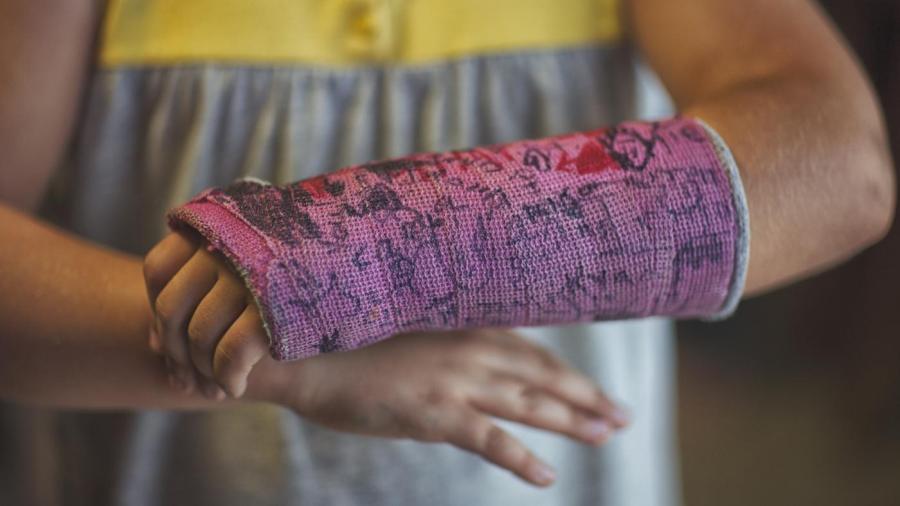What Are Common Ways to Break Your Arm?

According to Prevention magazine, most upper arm fractures are caused by a direct blow to the humerus, or upper arm bone, such as during a high-impact fall or car accident. The humerus can also break from being severely twisted or from a fall onto an outstretched arm. Fractures to the radius or ulna, the forearm bones, also occur from a direct blow or from falling onto a straight arm.
Mayo Clinic states that arm fractures are classified into several categories. Open, or compound, fractures occur when the broken bone breaks through the skin. This requires urgent medical attention, as the risk of infection is greatly increased. Closed fractures do not pierce the skin. Displaced fractures happen when the bone fragments on either side of the break need to be realigned surgically. A comminuted fracture breaks the bone into many pieces and often requires surgery for proper and complete healing. A greenstick fracture happens when the bone cracks but does not completely break. A buckle fracture happens when one side of the bone is compressed, causing the other side of the bone to bend or buckle.
According to Midwest Orthopaedics at Rush, treatment of a fractured arm requires examination, reduction, immobilization and rehabilitation. Once a doctor examines the broken bone and determines the severity of the fracture, the bones may need to be repositioned or surgery may be required. After surgery, the broken bone is held in place with a cast or splint. It may take several weeks or months for the bone to completely heal. Rehabilitation involves therapeutic activities to restore strength and flexibility to the muscle and joint.





